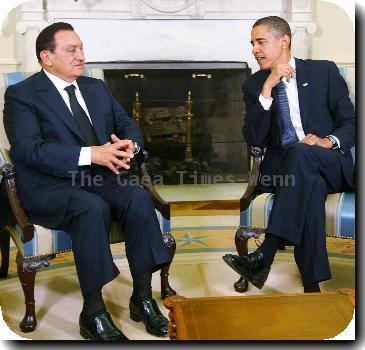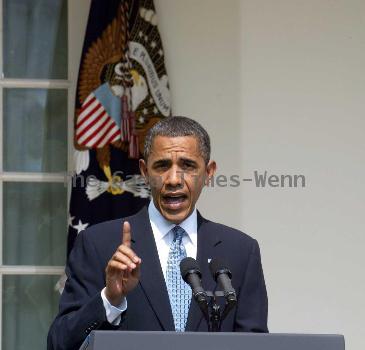The Fed takes a small step to buy government debt, signaling worry about the recovery
By Jeannine Aversa, APTuesday, August 10, 2010
Fed, worried about recovery, will buy US debt
WASHINGTON — As recently as two months ago, the Federal Reserve sounded optimistic about the economic recovery. Now the central bank is taking a new step that shows it is clearly more worried, but economists say it probably won’t help much.
The Fed said Tuesday that it would spend a relatively small amount of money — about $10 billion a month, economists estimate — buying government debt. The move is designed to drive interest rates on mortgages and corporate borrowing at least a little lower and help the economy grow faster.
In a statement after a one-day meeting, the Fed said the pace of the recovery “has slowed in recent months.” After its last meeting in late June, the Fed was rosier, saying that the recovery was “proceeding” and the job market actually improving.
The decision to buy government debt, using proceeds from Fed investments in mortgage bonds, was a shift from earlier this year, when the Fed was laying out plans to roll back some of the measures it took during the financial crisis.
At that time, the Fed was also preparing a strategy to begin raising interest rates again, a step taken to keep a growing economy from overheating. Now, though, the Fed has decided to keep its benchmark interest rate near zero.
“I don’t think they are going to raise interest rates until it is very clear that unemployment is moving definitively lower and that doesn’t look likely until late 2011,” said Mark Zandi, chief economist at Moody’s Analytics.
Economists pointed out that buying $10 billion of government debt in a $14 trillion economy is a relatively small move, and they said they did not expect it to have a dramatic impact.
“The Fed talked loudly but carried a small stick,” said Joel Naroff, president of Naroff Economic Advisors.
He said that while the financial system has the money to lend, banks are unwilling or unable to find suitable loans to make. Until they do, he said, “the recovery will be softer than anyone hoped for and there may be little the Fed can do about it.”
With interest rates so low, Congress, economists note, has more power than the Fed to stimulate the economy. But with midterm elections nearing, Congress is divided on whether the best move is short-term government spending, tax cuts or some combination.
On Tuesday, the House, called back from its summer break for a one-day session, pushed through a $26 billion bill to protect 300,000 teachers, police and other workers from layoffs this year. President Barack Obama signed it almost immediately.
The Fed action also came on a day when new figures showed worker productivity in the U.S. dropped this spring for the first time in more than a year — a sign that companies that want to grow may need to hire more people.
Investors reacted positively to the Fed statement. Stocks were down sharply before the announcement but made up ground after it was announced at mid-afternoon. The Dow Jones industrial average finished down about 55 points.
Treasury prices rose slightly because the Fed plan would reduce the amount of government debt on the market for others to buy.
The Fed said it would buy two-year and 10-year Treasurys by using the proceeds from debt and mortgage-backed securities it bought from Fannie Mae and Freddie Mac. It said that it would buy additional government debt as its existing Treasury bonds mature.
In 2007, before the recession and financial crisis struck, the Fed balance sheet was roughly $860 billion. It responded to the emergency by flooding the financial system with cash, expanding the balance sheet to about $2.3 trillion.
Rather than rolling it back, as the Fed had hoped to do as the economy improved, the Fed will keep the balance sheet steady while shifting its holdings out of mortgage securities and into more government debt.
“The news is positive but not meaningful,” said John Merrill, chief investment officer of Tanglewood Wealth Management in Houston. “The money is a pittance.”
The central bank said it expects to start buying the government debt Aug. 17 and planned to publish details Wednesday.
From March 2009 to this March, the Fed bought up $1.25 trillion in mortgage securities and $175 billion in debt from Fannie Mae and Freddie Mac. The goal of these purchases was to drive down mortgage rates and bolster the crippled housing market. The Fed also bought $300 billion of government debt between March and October 2009.
The Fed’s balance sheet has stayed at roughly $2.3 trillion since March.
Economists are skeptical that cheaper credit or even more government aid will get Americans shopping more and businesses to hire. They also say some jobs in construction and other housing-related fields, and in manufacturing, will never return to pre-recession levels — a shift in the basic structure of the economy.
High unemployment, lackluster income growth, sagging home values and tight credit are all restraining the pace at which Americans are spending, usually a major source of powering the economy.
AP Business Writers Martin Crutsinger in Washington, David Pitt in Des Moines, and Bernard Condon in New York contributed to this report.
Tags: Barack Obama, Federal reserve, North America, Personal Finance, Personal Loans, Real Estate, Recessions And Depressions, United States, Washington



